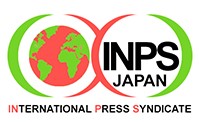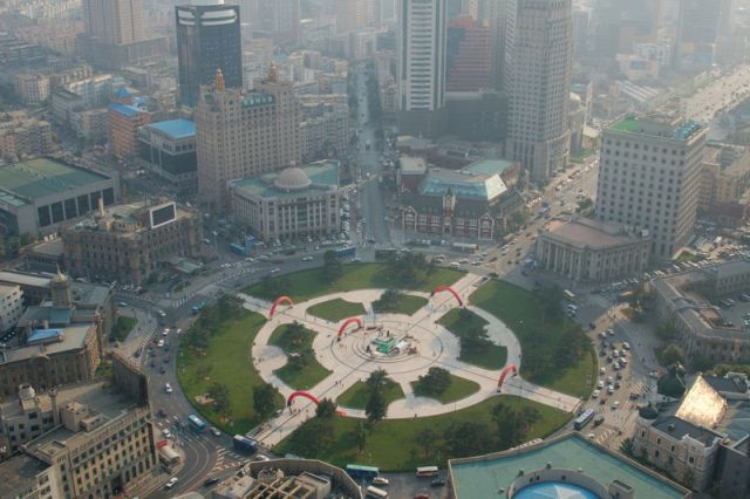By Katsuhro Asagiri
IDN-InDepth NewsFeature
DALIAN (IDN) – The partner cities of Dalian in Northern China and Kitakyushu in Western Japan have distinguished themselves as dedicated proponents of pollution control and clean environment. Back in the 1960s and 1970s the two cities were severely polluted by heavy industry and smokescreens. Now they are working together to mitigate global climate change in the interest of sustainable development.
It was not surprising therefore that the city of Dalian, which hosted the World Economic Forum’s ‘Annual meetings of New Champions’ in 2007, 2009 and 2011, organized the first Low Carbon Earth Summit (LCES) from October 19 to 26, 2011.
The Annual Meeting of the New Champions, also known as ‘Summer Davos’, is the foremost global business gathering in Asia, Introduced in 2007 in close collaboration with China and with the personal support of Prime Minister Wen Jiabao.
The eight-day conference in Dalian with the theme titled ‘Leading the Green Economy, Returning to Harmony with Nature’ was arranged by the Information and Research Centre of China’s State Administration of Foreign Experts Affairs and the China Council for the Promotion of International Trade. It attracted more than 4,000 experts, entrepreneurs, and government officials, according to the organisers. Nearly half of them came from 57 countries and regions such as the U.S., Canada, Germany, India and Japan.
The significance of the summit lies in the fact that the need for “low carbon economy” is widely recognized particularly since the 2009 UN climate change conference (COP 15) in Copenhagen. The conference covered multitude of climate change issues involving both public and private sectors, and offered a universal platform of scientific and technical communication for decision makers, researchers, industrial participants, business leaders and beyond.
Expressing the sentiments of several participants, J.C. Kala, Director General of the prestigious Amity Institute of Global Warming and Ecological Studies (AIGWES), told IDN that the summit was important because as Mahatma Gandhi said: “Nature provides everyone for his needs but not for greed.”
Green Eco Project
Aware of the history of environmental cooperation between Japan and China, General Manager and Director of the Department of Environment of the Tokyo Trucking Association (TTA), Keiji Endo, presented the Green Eco Project, which appears to be of relevance to China and other countries. TTA is presided over by Kazuo Ohtaka.
The project has four key aspects: sustainability; reasonable costs; accuracy of data collected; and, above all, the activities should be such that drivers are kept motivated. An important plank of the project is Green-Eco-driving education. Good drivers are given recognition as a means of motivation. Managers are involved in the project on an equal footing, and have the possibility to take part in seminars seven times a year, Endo told summit participants.
He reported that the project had made great strides: member participation has been on the rise every year. By July 2011, over 530 companies and more than 12,214 vehicles participated in the Green Eco project.
In addition, fuel consumption was reduced over the past four years – the fuel saved was equivalent to what would have been used by 546 large-sized tank trucks. The savings were worth about US$14.4 million or about 10 million Euros.
The reduction of fuel consumed implied a reduction in 22,888 tons CO2 emissions or equivalent to 1,635,000 cedar trees forested. Also the number of traffic accidents declined by 40 percent over a period of four years.
“We can say that this Project has made a great achievement not only in terms of national economy but also of the society as a whole,” Endo said, adding that the next step would be to benchmark fuel efficiency database for each type of vehicle.
“In Japan, we have many advanced devices to support the practice of Eco-driving, such as Digital Taco-graph or Drive recorders,” he said.
However, the Green Eco Project neither requires huge financial investment nor hi-tech. All that it needs is a piece of paper called Driving Management Sheet, and a pen to start with – and all this to protect the environment, reduce fuel costs, bring about a decrease in the number of traffic accidents and foster better communication among company co-workers.
“Gathering accurate data is critical to making good policy decisions,” Murtaza Ziauddin, Advisor, Matrix Stimulation, Schlumberger Pressure Pumping & Chemistry told IDN. “However, it is extremely difficult to get representative data. Many times the process is unnecessarily complex and few people participate. The elegance of Mr Endo’s work is that it is simple and yet extremely effective. It allows collection of representative data and also has the right incentives for the participants. It creates a win-win situation for all involved,” Ziauddin added.
“Considering that this project can be implemented with pens and papers without utilizing expensive instruments, I think that it can be put into practice in China and other countries too,” Hiroshi Maji, President of Japan’s ASUA Corporation, told IDN.
“As Mr Endo pointed out in his presentation,” Maji added, “even though Green Eco Project is a tiny initiative, once undertaken by great many people, it can have an enormous impact on environment.”
Sino-Japan Environmental Cooperation
Maji, a native from Kitakyushu City, said the City of Dalian was rightly chosen as the venue of the Low Carbon Earth Summit. The city once served as headquarters of the South Manchuria Railway Company (from 1906 till Japan’s defeat in WWII in 1945) and it has a long history of exchange with the city of Kitakyushu through the port of Moji. On the other hand, Dalian and the surrounding area carry footprints of Sino-Japanese history of the 20th century, particularly from a perspective of history of war.
According to a background paper on Sino-Japan environmental cooperation, Dalian became a sister city of Kitakyushu in May 1979. Since then, Dalian Environmental Protection Bureau on the one hand and Kitakyushu Environmental Protection Bureau and KITA (Kitakyushu International Training Association) on the other have been involved in frequent exchanges. Environmental protection trainees from Dalian return home “with greatly enhanced awareness in environmental protection, technical level and management experience,” the document states.
Japan’s Prime Minister Ryutaro Hashimoto visited China in 1997 to commemorate 25th anniversary of normalization of relations between China and Japan and proposed choosing one or two cities in China for conceptualization of building a “model city” for Sino-Japan cooperation in environmental protection.
The proposal was backed by Prime Minister Li Peng. Through Dalian’s efforts and Kitakyushu’s support, Dalian was finally listed as one of cities for this program, says the document.
The Japan International Cooperation Agency (JICA) supported the development of ‘Dalian Environmental Model Area’ between 1996 and 2000. Experts from China and Japan deliberated Dalian Environmental Model Area Development Investigation Report, which drew a grand blueprint for Dalian’s environmental protection work in future.
The “model city” program has not only helped clean Dalian’s environment but, as the document points out, also benefited enterprises engaged in environmental protection.
What provides additional dimension to partnership is that midway between Tokyo and Shanghai, Kitakyushu is the most advanced city in Japan with regard to pollution control and recycling technology. In fact, it calls itself the “world capital of sustainable development”.
In the 1960s it saw the birth of environmental protests in Japan, led by a group of housewives in Sanroku-cho, Tobata ward, who were concerned that their washing always became dirty while drying on the lines. Now Kitakyushu advises sister cities such as Dalian on water purification.
In 1992, Kitakyushu was one of twelve world cities given a Local Government Honours Award at the UN Earth Summit in Brazil to pay a tribute to its environmental programs. Within Japan it is a leading city in anti-pollution measures and recycling with the Ecotown facility in Wakamatsu ward.
Kitakyushu is home to the West Japan Industry and Trade Convention Association, with Kitakyushu International Conference Center and the West Japan General Exhibition Center. It is actively engaged in organising and hosting international conferences particularly on environment and education. A theme park called Space World is situated in Yahata-Higashi ward. JICA runs a training centre (JICA Kyushu International Center) there.
The ‘Organisation for Economic Cooperation and Development’ (OECD) introduced Kitakyushu’s improved environment to the world as the example of city transformed from a ‘Gray city’ to a ‘Green city’. Thanks due to Kitakyushu’s support, UN Environment Programme awarded Dalian the UNEP ‘Global 500 Award’ in 2001. [IDN-InDepthNews – November 22, 2011]


